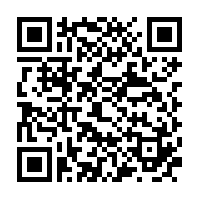Lailat-ul-Me’raj and Yawm-ul-Mab’as 1439H
22 April 2018
On Wednesday 26th Rajab, Syedna Taher Fakhruddin TUS presided over Urus majlis of Syedna Abdul Qadir Najmuddin RA. Qasida composed by Syedna Taher Saifuddin RA in remembrance of Syedna Najmuddin RA “Saqa Naw’un minat-taqdeese ramsa” and salaam were recited.
Maulana TUS then led Magrib Isha Namaaz on Laylatul Me’raj 27mi raat of Rajab ul Asabb, followed by Washeq and wasila mubaraka. Maulana TUS recounted Rasulullah’s SA Me’raj, where he travelled from Baitullah to Bait-ul-Muqaddas and ascended the seven heavens. Maulana recalled how Syedna Taher Saifuddin RA would say “Khuda Rasulullah ne itna qareeb kida – ankho ma wasaya.” Maulana prayed heartfelt doa for Dawat and Mumineen, and that may Allah Ta’ala fulfill their every wish. Syedna ended wasila on Husain Imam’s SA shahadat.
On Thursday, the 27th of Rajab, Syedna Taher Fakhruddin TUS presided over waaz majlis on Mab’as day. The Qasida mubaraka “Tahan-Nabi” was recited. Maulana addressed Mumineen as those who pray Kalemat-ush-Shaadat and, in azaan, pray ‘Ashaddo-anna Mohammedan Rasulullah’ and ‘Aliyun Waliullah’ – giving shahadat that Mohammed is Rasulullah, the one who taught us tawheed, and ‘Ali is his wali, whose walayat Rasulullah made obligatory (farizat).
Maulana expounded on the meaning of our prayer in tahiyaat - “ba’as haq-qun… wanna saat atiyatun.” Yawmul Ba’as – the day of ba’as is the day of Qiyamat. This daur is joined with Qiyamat. Maulana also explained that performing rozu on this day and praying Moti-us-Sawalat doa prior to iftaar provides kaffarat for 60 years of sins. Maulana explained that we encourage our children to do this rozu so that they may form the habit of fasting. Rasulullah’s Mab’as was on a Monday, and on the next day, Tuesday, Amiral Mumineen SA, the first from men, entered the fold of Islam. Khadjia AS was the first from women. She was already aware of Rasulullah’s maqam and was awaiting this very moment from the time she first saw Rasullulah.
Maulana narrated in detail Rasulullah’s journey on Me’raj night and how he was honored by learning of all that would occur in this daur until Qiyamat. Maulana explained how they refer to Nabi in English as a “Prophet”, one who prophesies regarding future events. Rasulullah did so, such as indicating Mehdi Imam’s AS zuhoor by his statement that the sun would rise from the “Maghreb” (literally West) in 300 years. He also indicated the position of the Du’aat Mutlaqeen in India by referring to them as his brothers (ikhwan) during Hijjatul Wada near Hajar-e-Aswad. A true prophet’s prophecy always comes true.
Maulana expounded on the meaning of the word “Mohammed” and performed tawjeeh bayaan of the word “Mohammed.” Maulana proceeded to explain the significance of each letter.
Maulana TUS recalled that once, during a speech in Syedna Taher Saifuddin’s RA era, Syedna Qutbuddin RA prayed salaam on Rasulullah and then prayed salaam on Amirul Mumineen. Syedna Taher Saifuddin was very pleased with this and confirmed that this is how it should be done. Thereafter, whenever a qasida bayt with salaam on Rasulullah is recited we also recite the bayt with salaam on Amirul Mumineen AS, and vice versa. We also pray salaam on Imam-uz-Zaman. Maulana recited abyaat from qasida “Ya Banil Mabose Min Aale Qusai’.
Maulana graced Mumineen with divine guidance and maw’izat. He explained Rasulullah’s hadith: Perform these 4 things and Jannat’s doors will be open for you.
(1) Pray salaam loudly
(2) Feed others
(3) Perform sillat-ur-raham, especially with one’s relatives. One should not sever relationships.
(4) Pray namaaz at night, while others are asleep. Similarly, answer Dawat’s call during satr, while others may be in ghaflat.
Maulana performed doa for Mumineen, for their ba’as, “may we soon return to where we came from.” With Rasulullah’s wasila who fought in 28 wars, Maulana prayed doa for Nasr-e-Azeez. Maulana then narrated when Rasulullah appeared in Umme Salama’s dream, informing her of the events of Karbala. Maulana then prayed shahadat of Ali Asghar AS and then Husain Imam SA.















